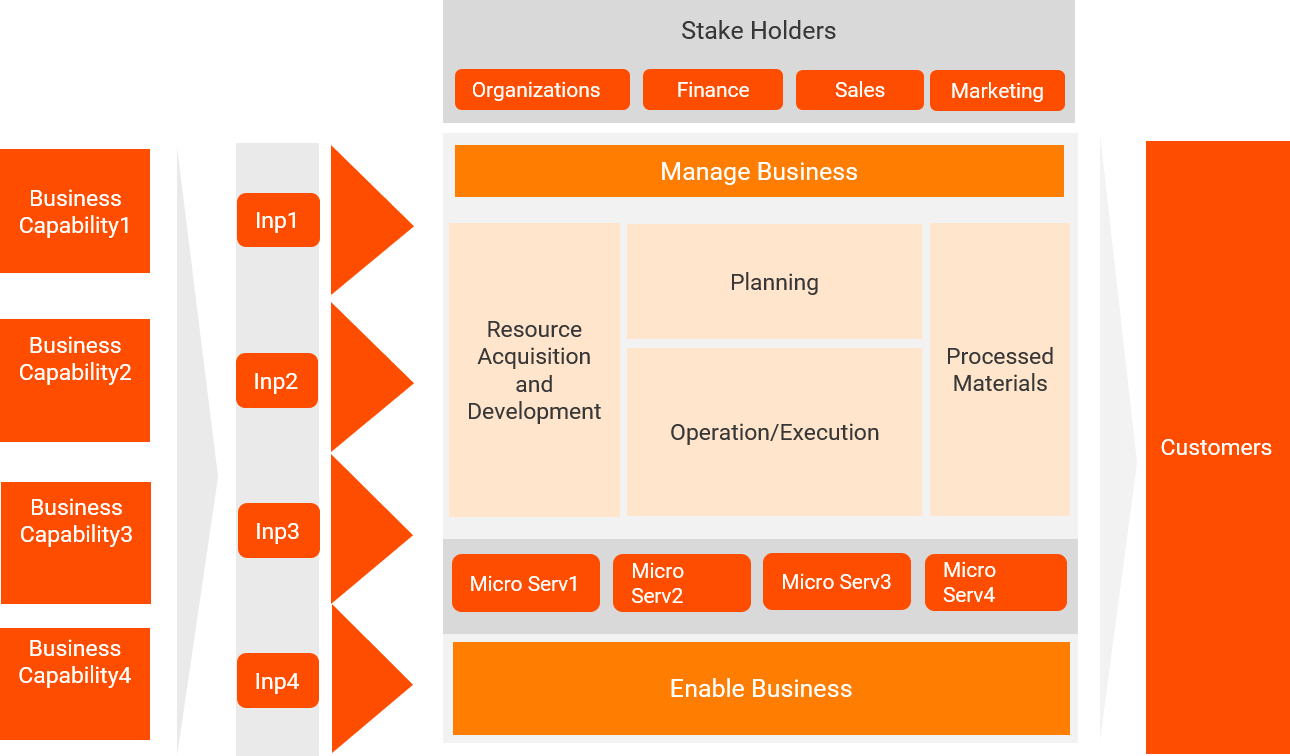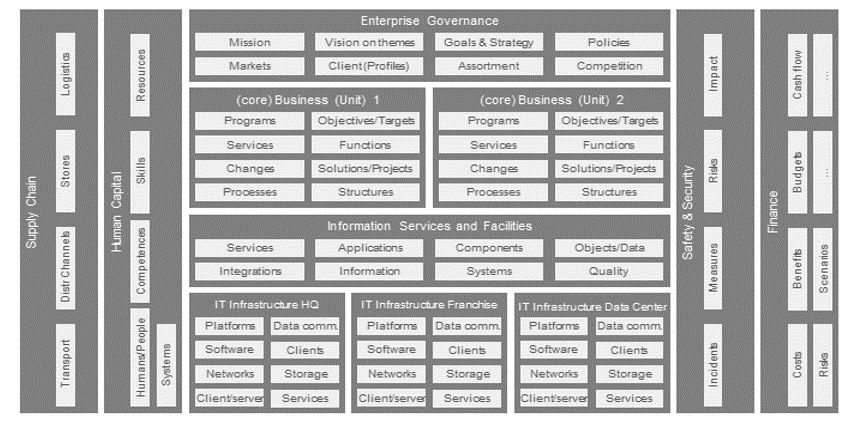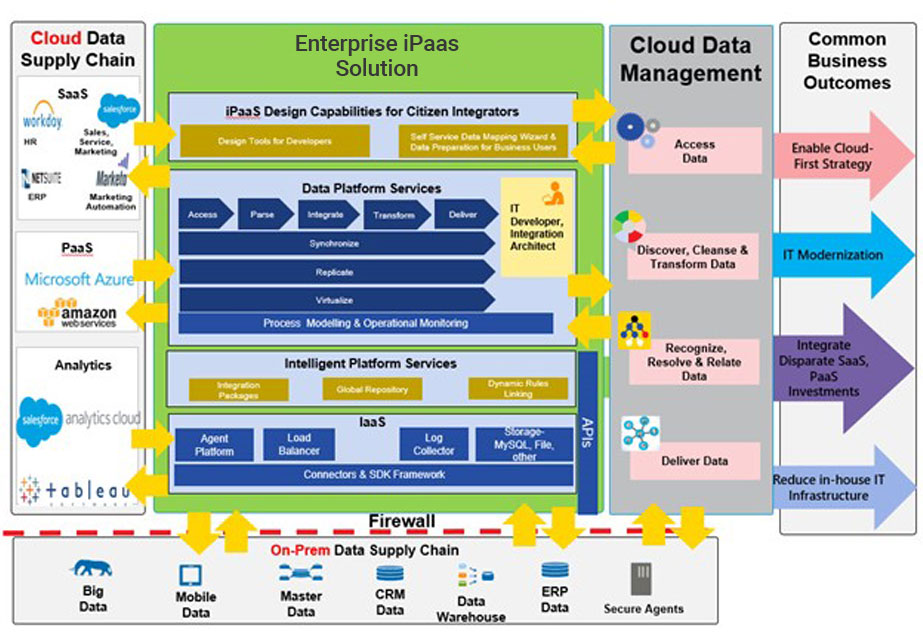Gartner defines Enterprise Architecture (EA) as “a discipline for proactively and holistically leading enterprise responses to disruptive forces by identifying and analyzing the execution of change toward desired business vision and outcomes. EA delivers value by presenting business and IT leaders with signature-ready recommendations for adjusting policies and projects to achieve target business outcomes that capitalize on relevant business disruptions. EA is used to steer decision making toward the evolution of the future state architecture."
Today’s businesses are demanding new digital technology and other emerging technology tools, including Artificial Intelligence and Machine Learning, to keep pace with evolving markets and consumer expectations. In this environment of total digitization, the centrality of the consumer experience is paramount. These demands are straining technology organizations that try to implement new technology within existing enterprise architecture. In fact, the old-school approach to enterprise architecture which was driven purely by technical objectives hinders the ability to use emerging technologies to improve business agility, speed, and innovation. This stove-piped approach of developing point solutions has left organizations with a huge technical debt in terms of fragmented, redundant and siloed environments. In contrast, modern enterprise architecture must be modular, layered, and flexible with enforced data abstraction. This approach allows businesses to form a complete and common view of information, guidance, and direction. It also enables them to stay responsive to technology changes while minimizing large scale costly application overhaul and business disruption.
The goal of Enterprise Architecture is to apply sound architectural principles and practices to guide organizations through the business, information, process, and technology changes necessary to execute their strategies. To thrive and stay competitive in both up and down markets, companies across industries must adapt to the increased pace of business. They must be able to make decisions faster, respond to customers faster, and bring new products and capabilities to market faster.
EA must take into account:
- Organizational architecture
- Business architecture
- Data/Information architecture
- Application capability architecture
What the modern enterprise needs most is the ability to achieve the realization of business strategy from information technology. Enterprise Architecture should be able to show how all the disparate technologies, business processes, functions, and operations are stitched together to create a whole that is greater than the sum of its parts.
An advanced modern Enterprise Architecture is a prerequisite to effectively implementing a digital strategy that the business is demanding. Today’s enterprise architecture must be dynamic to handle rapidly evolving business needs through continuous review of products and services from customer service and supply chain to operations and human resources.
Informatica’s Enterprise and Cloud Data Management platform of enablers delivers on the key tenets of a modern enterprise architecture by:
- Connecting content to business processes intelligently for creation of actionable insights
- Accelerating performance and time-to-market by integrating with key business applications and data
- Improving data and information governance while also minimizing non-compliance risks
- Enabling users at every level through achievable data literacy, democratization, collaboration and innovation objectives
Enterprise Architecture Capability and Reference Models
EA helps business and IT leaders capture, understand and articulate opportunities, challenges and risks – including security. Three major benefits of EA are:
- Complexity Management: holistic view of an organization provided by enterprise architecture means that organizations are more able to efficiently and confidently assess assets and determine their value.
- Informed Technical Investments: by creation of actionable priorities and identification of gaps, organizations have a better understanding of what they should invest in.
- Reduction in time to value: EA tools accelerate analysis and decision support for alternative investment, rationalization, optimization opportunities, and plans for assessing risk and change and their impact on the organization. Modern Enterprise Architecture combines current and future-state of the business by creating the glue that aligns people, processes and technologies. Business capability modeling is now at the heart of EA methodology. Information governance and Business Portfolio management are areas where EA must have a front row seat in order to steer technology investments to achieve desired business outcomes. The simple capability model shown below allows the business to visualize the process while also reinforcing the value of architecture in achieving organizational goals.

Generic Capability Model
The higher-level Capability Model can be expressed in a more detailed structural format showcasing the holistic view of business and IT integration overall. Below is a sample reference model that can easily be adapted for any industry vertical as well as cloud implementation.

Enterprise Architecture Reference Model
Informatica's sample Reference Architecture provides an end-to-end modular template solution to increase agility, reduce solution delivery time, and create a shared vision.

A sample iPaaS Reference Architecture used in Informatica workshops
The Role of Enterprise Architects
Enterprise Architects must perform analysis of business structures and processes to draw conclusions for addressing the goals of enterprise architecture (e.g., effectiveness, efficiency, agility, elasticity, and continuity of complex business operations through thoughtful application of technology). To successfully execute their role, Enterprise Architects must have:
- he Right Level of “Voice” and Leadership in the Organization: According to Gartner Research Circle Members, enterprise architects are “leaders” and collaborators in evaluating emerging technology, with responsibility for strategy and decisions.
- The Right Organizational Structure: Organizations must assemble new teams that are aligned with business leaders and/or product owners rather than with only technology disciplines. These teams should be able to operate with “minimum viable bureaucracy” and must balance high autonomy with high alignment.
- Right Talent: Organizations need to develop enterprise architects who have cross-disciplinary skills in technology and business. They must be visionaries and eager to collaborate with business counterparts, not just technological zealots. They make technology recommendations that support business strategy, priorities, and scalability to demonstrate high value in the innovation process. They are comfortable defining solutions iteratively without always knowing what the final state will look like.
- The Right Culture: To facilitate the move into new markets, introduce new products, flex to changing demands, and/ or scale quickly, the organization must become more fluid and dynamic. It must be willing to allow autonomy, experimentation, and the ability to fail fast.
- The Right Roadmap: An EA roadmap must deliver value in months rather than years. The roadmap should orchestrate the move from the old EA platform to new enterprise architecture in incremental steps over time and provide phased, modular, and subsystem integration without requiring a complete re-write.
Architecture and technology must be fluid and flexible, capable of incrementally adapting in weeks or months rather than several years.





